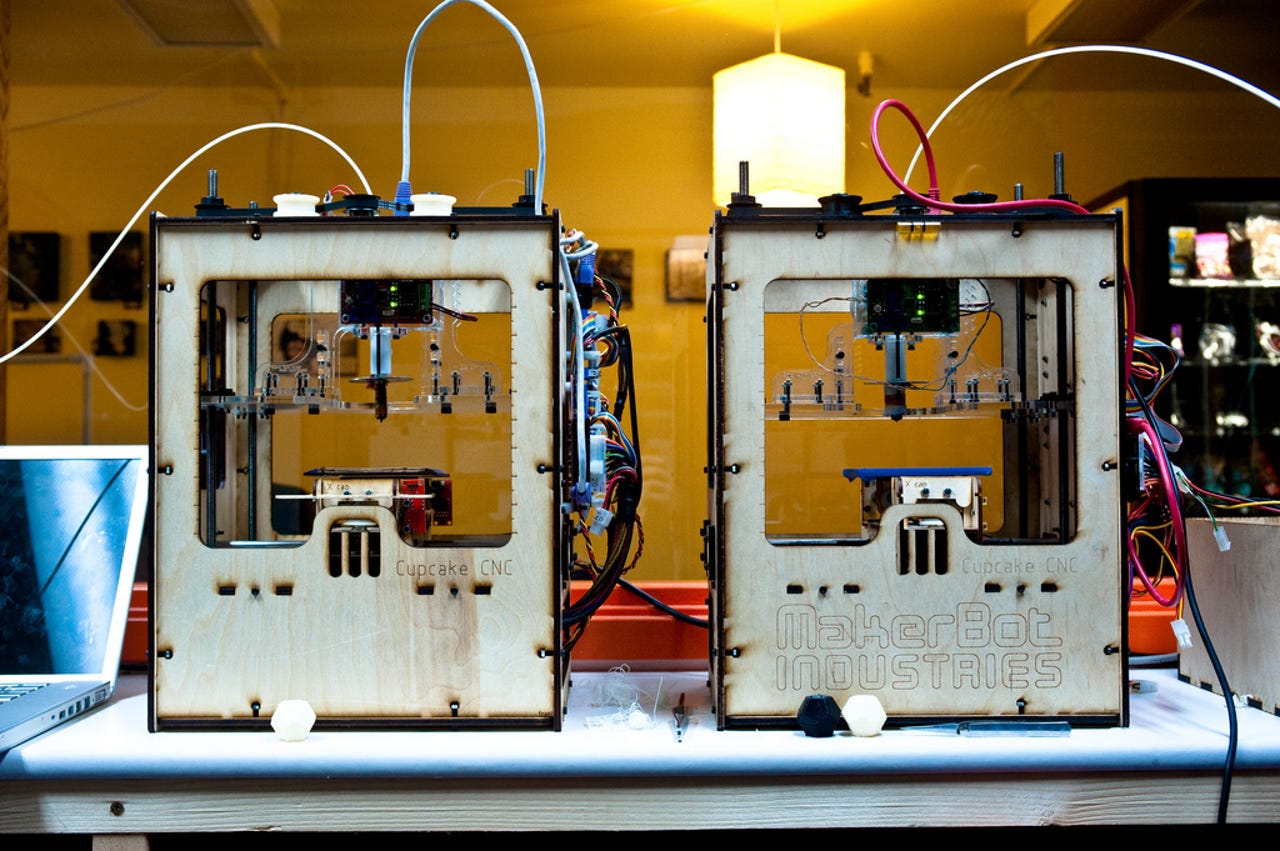Innovation
MakerBot unveils 3D printer 'innovation centers'
MakerBot hopes businesses and universities can make breakthroughs with large-scale 3D printing centers.


MakerBot, a leader in the affordable desktop 3D printing industry, announced that it's partnering with businesses and universities to create "innovation centers" which, it argues, will help the participating organizations "innovate faster, collaborate better and be more competitive."
For universities, the idea is to give more students exposure to 3D printing technology and develop innovative uses for the technology. For businesses, the goal is to speed up product design cycles, and to save time and money by increasing prototyping capabilities.
The first of these innovation centers will open later this week at State University of New York at New Paltz. The school already has a program in digital design and fabrication and will use the added 3D printing capabilities to expand that program.
The largest innovation center will be at College of the Ouachitas in Malvern, Arkansas, with more than 50 3D printers. One of the main projects the college is using 3D printers for is to explore the printing of robotic prosthetic hands.
But this isn't the first time MakerBot has targeted educational facilities as strategic places to deploy the technology. The company has a goal of putting a 3D printer in every school, in the United States. MakerBot also recently partnered with Dell to bring the technology to more small businesses.
And while achieving these goals could be a boon to innovation, it's also just a smart business move. At this point desktop 3D printers, while intriguing, aren't going to bought up by the average consumer like their 2D counterparts, even as the prices drop. Hobbyist and designer can easily find uses for 3D printers, but the devices haven't done enough to show how they could help consumers with their everyday lives, other than making high-priced plastic trinkets.
That's why it makes sense for MakerBot to focus on those places where innovation happens. Not only will there be interest in the budding technology, and money available to purchase them, but the innovations made at these innovation centers could have major impacts on the future of consumer 3D printing. Maybe someone at an innovation center will find a reason for everyone to have a 3D printer. At least that has to be the hope for MakerBot.
Photo: Flickr/Matt Westervelt
Related on SmartPlanet:
This post was originally published on Smartplanet.com